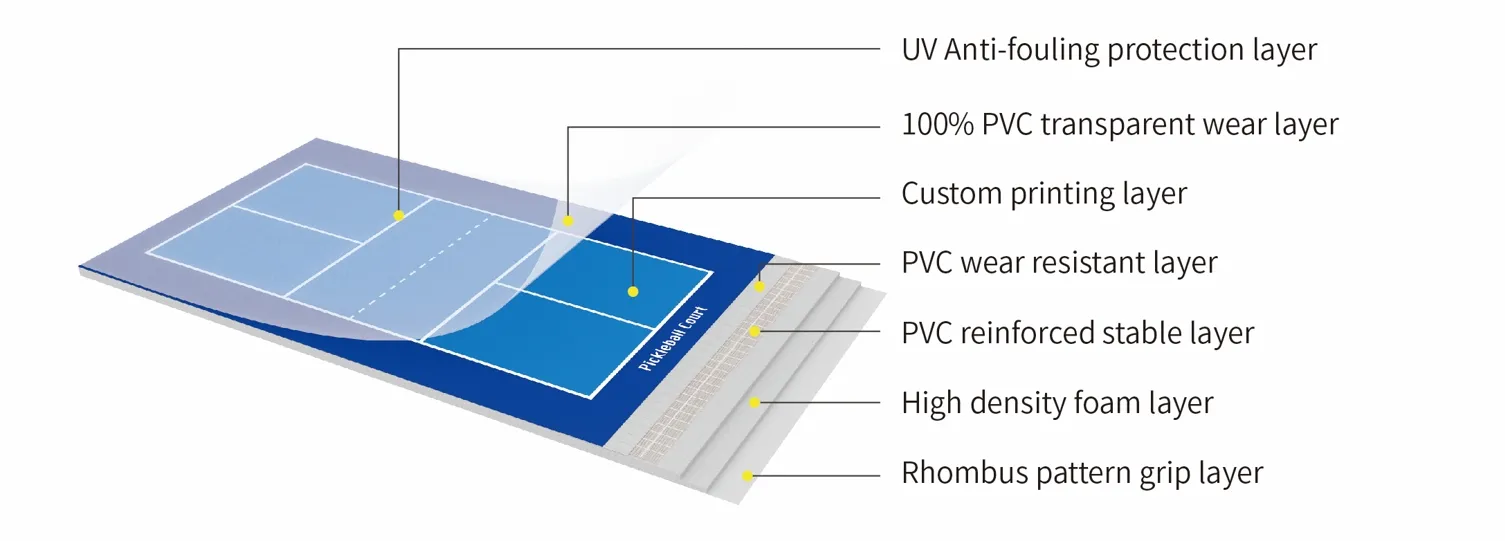Aug . 01, 2024 04:47 Back to list
Exploring the Dynamics and Strategies of Badminton Court Play and Net Techniques
The Court and Net of Badminton Essential Elements of the Game
Badminton is a sport that embodies agility, precision, and competitive spirit. Central to this fast-paced game are two fundamental components the court and the net. These elements not only define the play area but also influence gameplay strategies, player dynamics, and overall experience.
The Badminton Court
A standard badminton court is rectangular and divided into two halves by a net. For singles matches, the dimensions are 13.4 meters long and 5.18 meters wide. In doubles matches, the width expands to 6.1 meters, reflecting the need for more court coverage and teamwork among players. The court is marked with specific lines that determine the play area — the baseline, the service lines, and the sidelines.
The overall layout of the court is designed to maximize player movement and agility. Players must be quick on their feet, responding rapidly to the shuttlecock, which can travel at high speeds. The surface of the court can vary; it might be made of wood, synthetic materials, or even cement, affecting player traction and movement. Different surfaces can lead to different playing styles, with some players excelling on faster courts than others.
The Net A Gateway to Strategy
The net itself is 1.55 meters high at the center, creating a barrier that adds a layer of challenge to the game. It plays a critical role in defining how players engage with each other. The height of the net requires players to develop specific techniques to clear it and also offers opportunities for strategic plays, such as drops, smashes, and net shots. The net effectively divides the court into two territories, compelling players to adopt both offensive and defensive strategies.
court and net of badminton

The presence of the net also encourages players to develop their skills at the front of the court. Net play is crucial, especially in doubles matches, where quick reflexes and sharp angles can dictate the pace of the game. Mastering net shots can give players a significant advantage, enabling them to control the flow of the game and put pressure on their opponents.
Game Flow and Player Dynamics
The interplay between the court and the net creates a unique rhythm in badminton matches. Players must continuously adapt their techniques based on their positioning on the court and the height of the net. They need to constantly anticipate their opponent’s moves and adjust accordingly, making badminton not just a physical contest but a mental one as well.
As players engage in rallies, the court layout and the tension of the net contribute to the ebb and flow of the match. A well-placed shot that just clears the net can create a pivotal moment, leading to an unexpected point or an error from the opponent. This unpredictability keeps players and spectators alike on the edge of their seats.
Conclusion
In conclusion, the court and net of badminton are more than just physical structures; they are the foundations of the game. They shape player interactions, dictate strategies, and influence the overall dynamics of play. As players hone their skills on the court and learn to master the intricacies of the net, they develop not only their technical abilities but also a deep appreciation for the sport itself. Whether a casual player or a professional athlete, the court and net remain integral to the thrilling experience that is badminton.
-
Professional Tennis Court Lining Services Pickleball Court Marking Experts
NewsJun.24,2025
-
Pickleball Court for Sale - Premium Flooring Solutions for Sports Venues
NewsJun.10,2025
-
Maple Grove Outdoor Pickleball Courts - Premium Conversion & Durable Materials
NewsJun.10,2025
-
Best Pickleball Outdoor Courts Solutions Convert Tennis Courts, Outdoor Covered Courts, Maple Grove Options
NewsJun.10,2025
-
Convert Tennis Court to Pickleball Fast & Affordable
NewsJun.09,2025
-
Indoor Outdoor Pickleballs Durable & All-Weather for Any Court Play
NewsJun.09,2025

